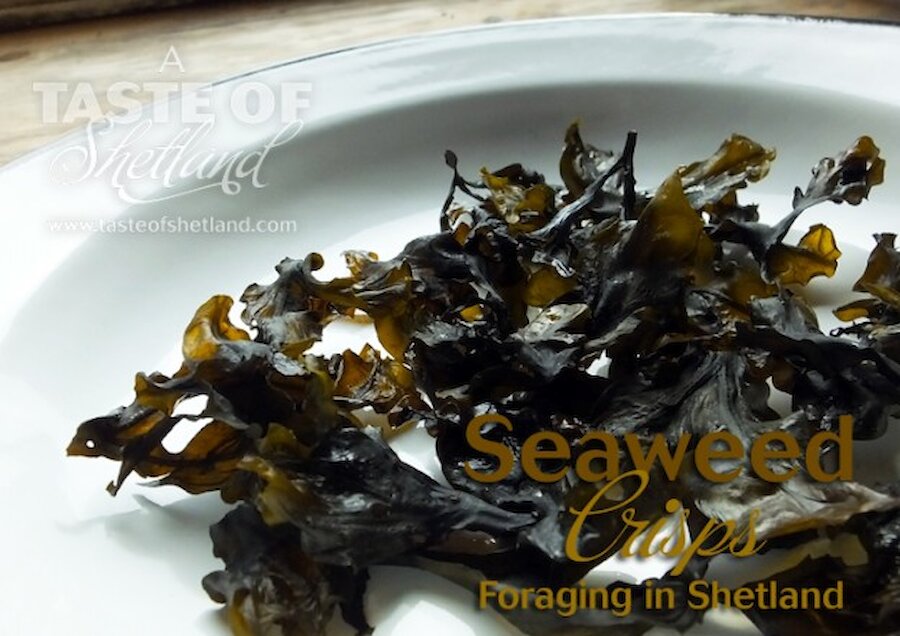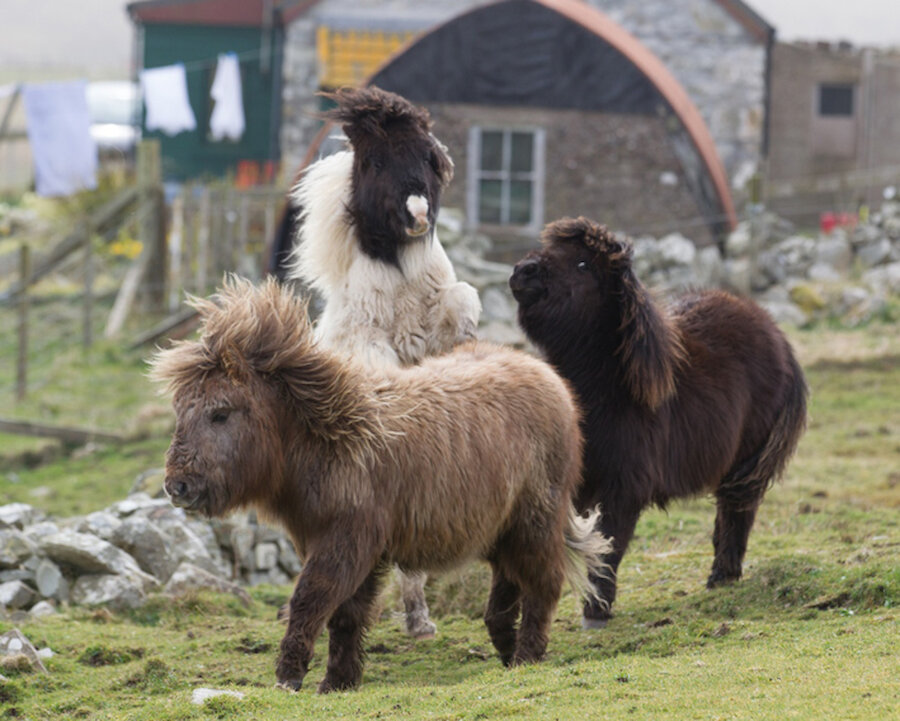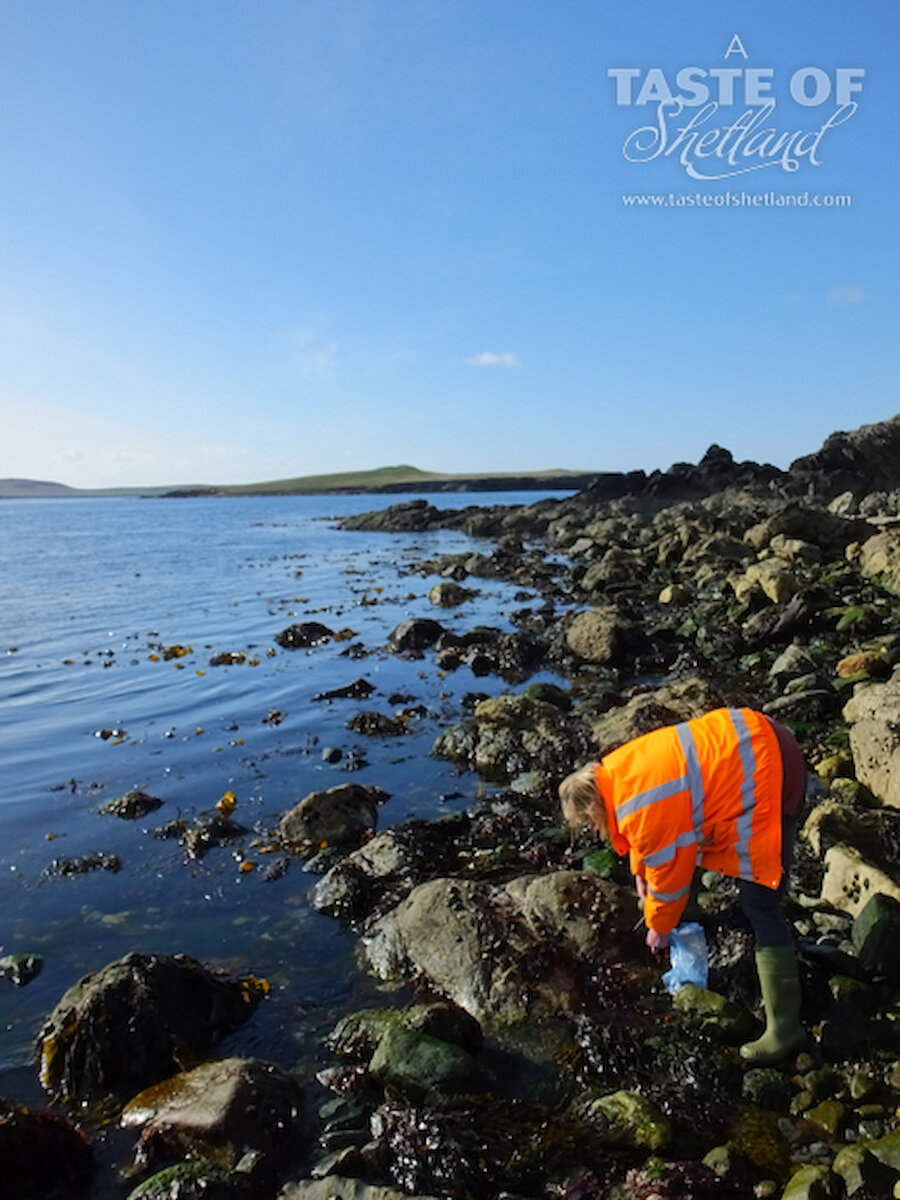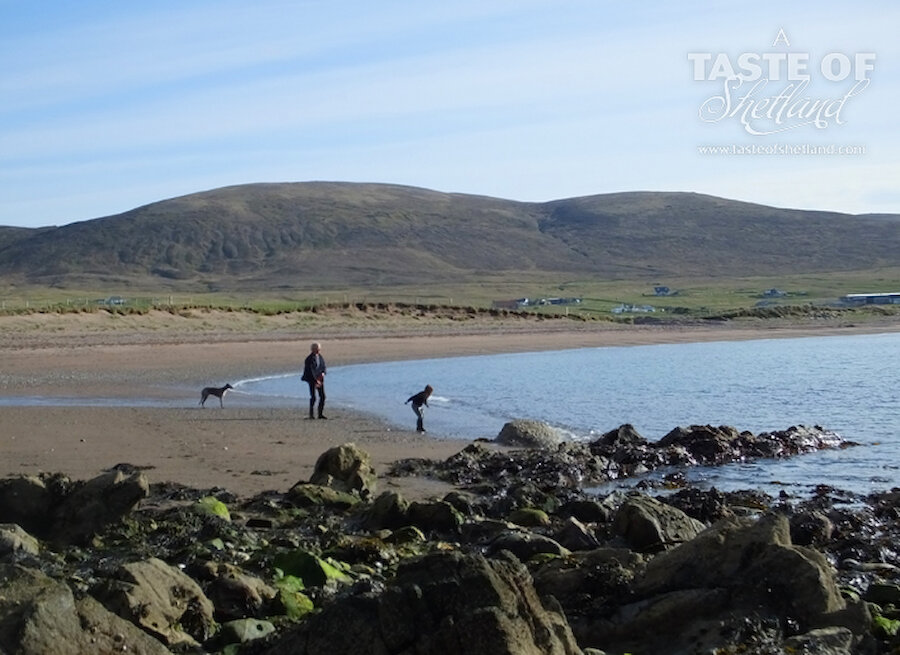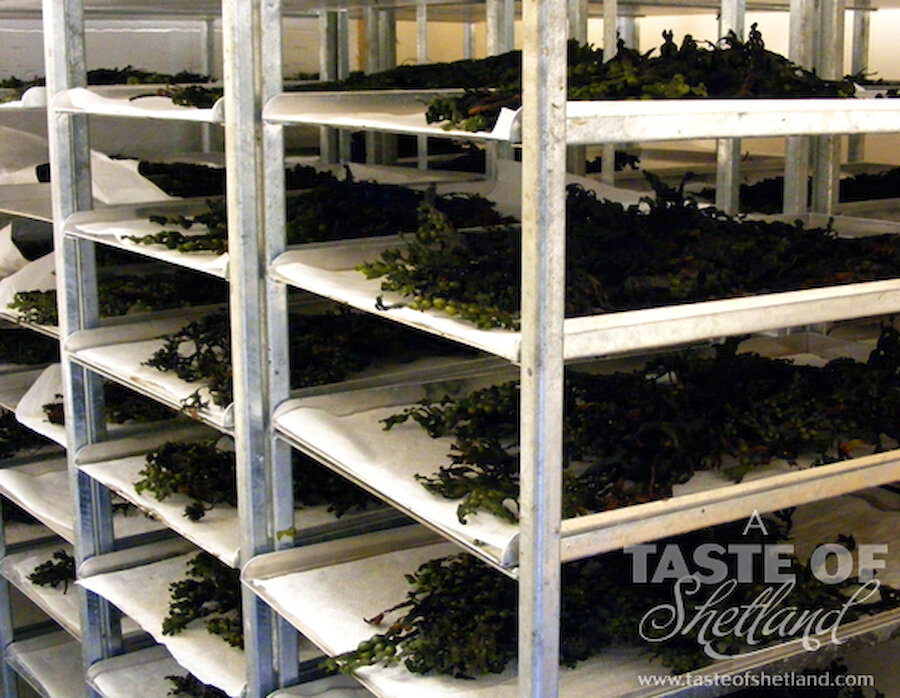I love seaweed.
I fell in love with Shetland seaweed when I was in Scoop Wholefoods a few years ago and saw a packet of Bod Ayre Shetland Seaweed Sprinkle for sale. I started using it in cooking and became hooked, putting it in absolutely everything from fairy cakes, ice cream, home made pasta, seaweed pesto, breakfast smoothies and even, once, a giant Shetland pepperkakehus for Christmas. I think the green flecks throughout the pasta and bakes are incredibly attractive, besides the fact that seaweed is a renowned source of essential nutrients.
Sadly, Bod Ayre stopped trading earlier this year so my source of dried Shetland seaweed disappeared.
So I thought!
When I found out that Frances Taylor over at Thordale Shetland Stud in Walls on the sunny west side of Shetland foraged her own seaweed and dried them into snackable crisps I had to find out more!
My daughter and I paid Frances a visit at her home where we met The Bebbies, three rescued Shetland ponies who have become quite famous worldwide through Frances' blog My Shetland.
Frances explained to me how she goes about harvesting her seaweed. First, you need a clean water location when the tide is out. Second, a bag and a pair of scissors. Nice weather helps too.
"Love your rock," Frances says. "Only take as much seaweed as you need, taking a little bit from each rock. Make sure the seaweed is young (small), fresh and alive. It should still be attached to the rock."
While Frances was snipping away she offered me a taste of some fresh, straight from the rock seaweed. I have to confess I discovered then that I'm not a fan of fresh seaweed; it tastes like a big mouthful of chewy sea (and it took hours for that taste to get out of my mouth!). I'll wait for the dried stuff, thanks!
The seaweed growing around UK shores, according to Eat Weeds, is all perfectly safe to eat. The only ones you have to watch out for are either in deep water (and you would have to consume a large quantity to suffer any ill effect), or those growing in polluted areas, hence Frances' recommendation to source your seaweed from fast moving water.
We identified species in our harvest such as bladderwrack, dulse and green nori, species all regularly consumed for centuries in Japan.
That afternoon we went seaweed foraging was a glorious sunny day. The sun shone brightly and I saw my first Arctic Tern (Tirrick) and Arctic Skua (Bonxie) of the year.
Frances dries her seaweed in the bottom oven of her gorgeous Rayburn, but you could always dry it in the sun (weather permitting) or even in a dehydrator if you have one. Bod Ayre used to dry their seaweed in a large purpose built drying room.
Frances harvests her own seaweed for personal consumption. She started harvesting and drying her own because she was paying a small fortune off the internet for it and she realised she could just go down to the seashore and get her own for free.
"I sometimes sit a bowl of dried seaweed next to the computer and the next thing I find is that I've eaten the whole thing!"
When not snacking on her seaweed crisps Frances uses them in miso soup. She leaves the seaweed in large pieces, adding them to the fish-based soup. They rehydrate quickly and have a texture like noodles.
I returned to Frances' house a few days after our foraging trip to try the final product, and wow! I can see how one could sit and nibble away until the entire bowl was gone. The dried seaweed crisps are light, crumbly and slightly salty (unlike the fresh version!) with a wonderful sea flavour. Very, very more-ish!
If you want to find out more about Frances' Bebbies and all the other pets and ponies at Thordale you can follow Frances' blog My Shetland and her website Thordale Stud.
Seaweed Crisps
Course: Main
Cook Time: 1 hour
Ingredients:
- Fresh Shetland seaweed - (collected at low tide)
Instructions:
- Harvest young Shetland seaweed from a clean salt water source (ideally fast moving water) at low tide using a pair of scissors. Make sure the plant is fresh, alive and still attached to its rock. Only take a little bit from each rock, and only take enough that you need.
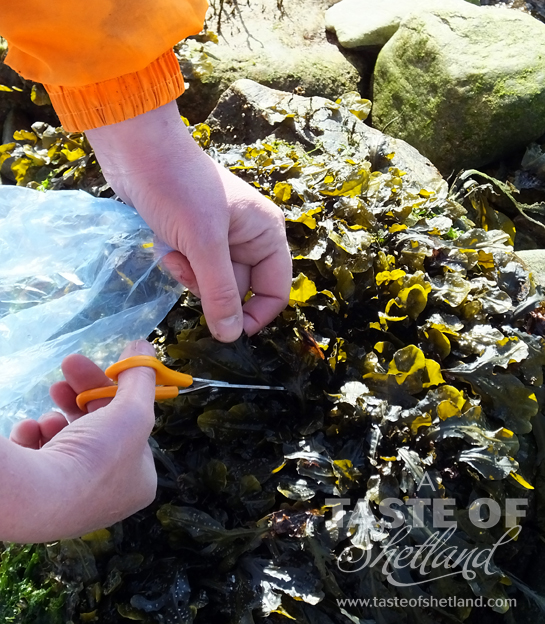
- Rinse seaweed in two changes of cold fresh water.
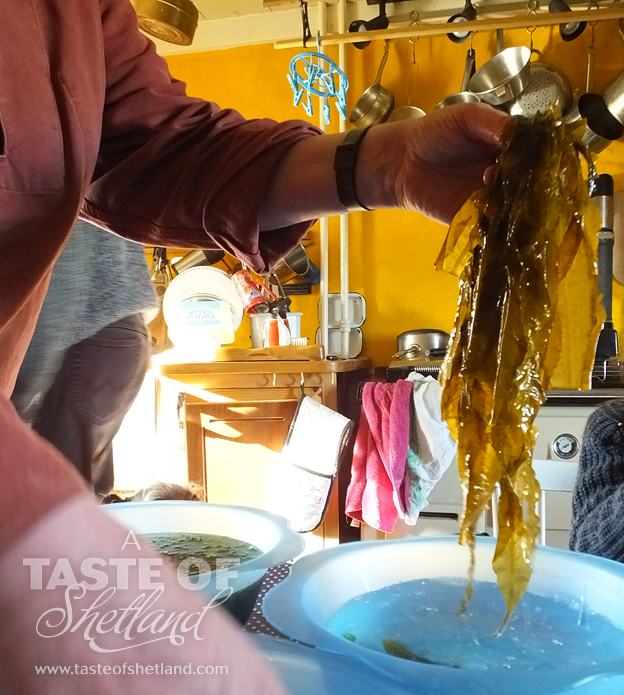
- Leave the seaweed to soak in the water for a few hours in each soak.
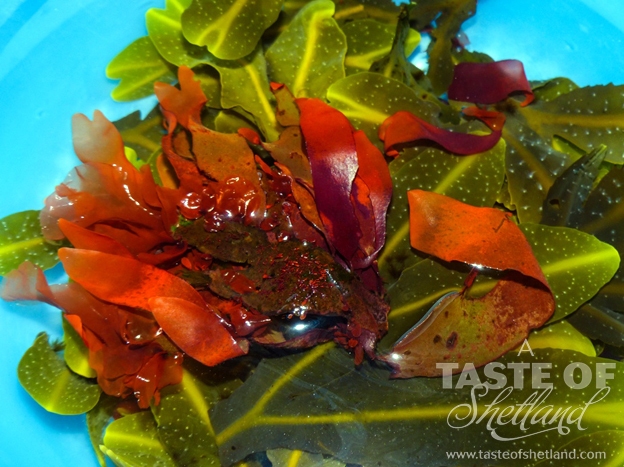
- Lay seaweed flat on a wire rack and leave to dry in a warm place overnight, ideally in the bottom oven of a Rayburn. Don't dry in a high temperature as you don't want to cook the seaweed, you want to dehydrate it.
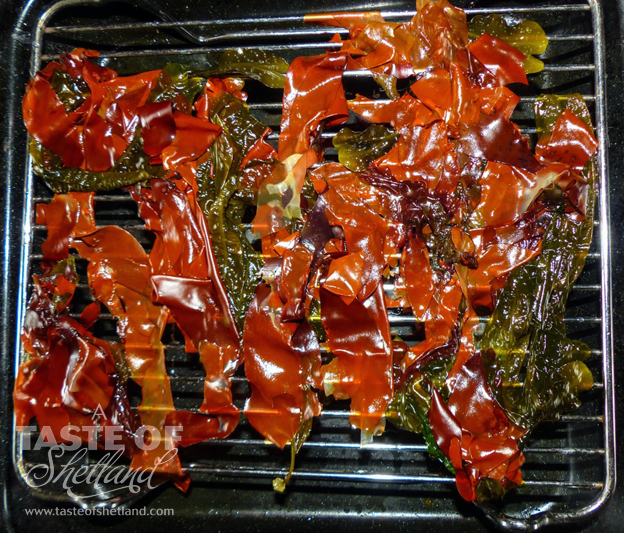
- Enjoy your seaweed crisps as you would a bag of potato crisps, or crumble and use in cooking.
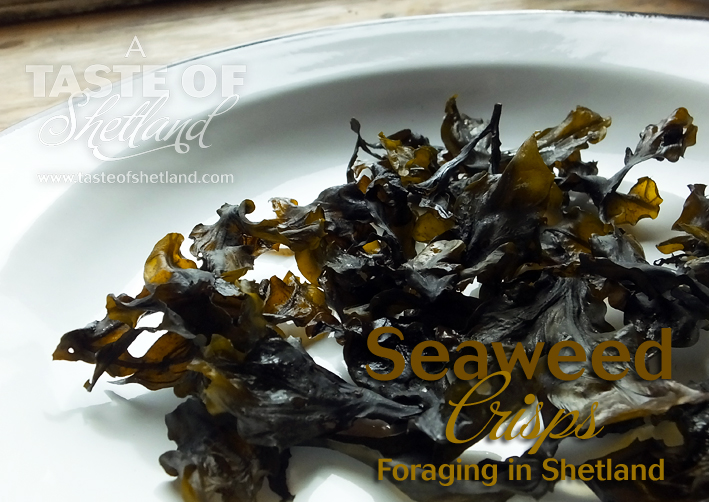
Do you forage in Shetland? What do you forage? I've been told of the elusive heather berry and would like to know more about it. If any readers know anything about them, or anything else that can be foraged in Shetland, please leave a comment!

